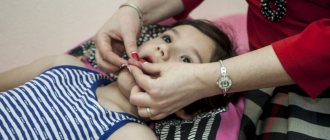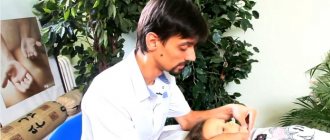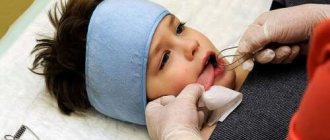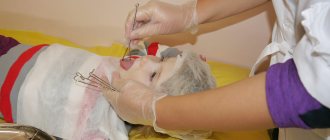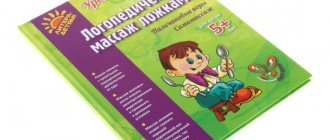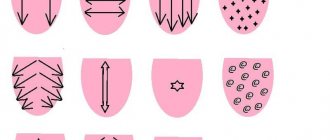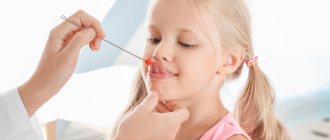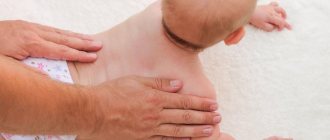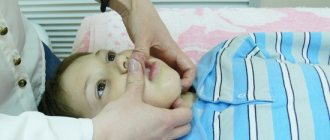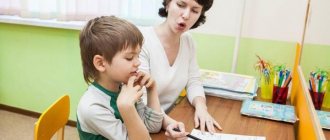What is speech therapy massage?
For children with cerebral palsy, mental retardation or other diseases in which impaired muscle tone is manifested, sometimes breathing exercises alone are not enough. In this case, speech therapy massage comes to the rescue. This type of procedure has long established itself as one of the most important steps in correcting a child’s sound pronunciation. Everyone knows that a full dialogue with the baby affects the development of speech, and a good atmosphere promotes communication.
Speech therapy massage is quite effective because during it the upper tissues of the face and almost all organs of the oral cavity are worked out: tongue, palate and gums.
There are many varieties of this massage, but there are only four main ones:
- point - during which the specialist focuses on certain biologically active points;
- classic speech therapy massage for children - performed directly near the affected area, characteristic movements are rubbing, stroking and kneading;
- hardware massage - involves the use of special devices that are capable of creating vibrations of different frequencies;
- probe massage - during this type of massage, the doctor uses devices called probes. They were developed by the author of this technique, Novikova E.V.
Stuttering, logoneurosis, hesitation in speech, dysrhythmia
Stuttering in children is a disorder of the tempo-rhythmic aspect of speech caused by repeated convulsions in the articulatory, vocal or respiratory parts of the speech apparatus. Stuttering in children is characterized by “getting stuck” on individual sounds, their repeated, involuntary repetition, accompanying movements, speech tricks, logophobia, and vegetative reactions.
Neurological therapy classes for the correction of stuttering in our center can be based on various author’s methods: Cheveleva, Vlasova and Rau, Shklovsky, Volkova, Mironova, etc. The main methods of speech therapy work for stuttering are breathing-vocal gymnastics, relaxation of tense articulatory muscles, speech exercises on rhythmization of speech, normalization of its tempo, development of expressive speech intonation, logorhythmic exercises.
Children with stuttering, logoneurosis, and even hesitations in speech must be examined by a neuropsychologist and speech therapist.
Competent correction of stuttering, which leads to sustainable results, must necessarily include a neurocorrectional set of measures (neuropsychological correction, neuroacoustic programs) and a system of “correct” speech therapy classes.
Stuttering in children is unintentional stops and hesitations in oral speech that arise as a result of a convulsive state of the speech muscles.
It must be remembered that in addition to speech spasms, stuttering in children is accompanied by a disorder of higher nervous activity, which in some cases may be associated with a neurotic reaction, in others with organic damage to the central nervous system. Therefore, it would be wrong to consider stuttering in a child as a purely speech problem; The study and correction of stuttering in children is impossible without the integration of knowledge from the field of neuropsychology and the development of brain areas.
This is where the root of problems with speech hesitations lies.
Depending on the pathogenetic mechanisms underlying stuttering, there are 2 forms of stuttering in children: neurotic (logoneurosis) and neurosis-like. Neurotic stuttering in children is a functional disorder; neurosis-like is associated with organic damage to the nervous system and brain.
In the most extreme cases, stuttering can make speech and communication nearly impossible. The severity of stuttering may vary for the same child in different situations.
Depending on the nature of the course, the following variants of stuttering in children are distinguished:
- wavy (stuttering increases and decreases in different situations, but does not disappear);
- constant (stuttering has a relatively stable course)
- recurrent (stuttering occurs again after a period of speech well-being).
Children who stutter often exhibit enuresis, night terrors, increased anxiety and vulnerability. Therefore, ignoring stutters and “running” this problem is DANGEROUS.
Perinatal brain damage in children can be associated with toxicosis of pregnancy, hemolytic disease of the fetus, intrauterine hypoxia and asphyxia during childbirth, birth injuries - and all this can subsequently lead to stuttering and hesitation in speech.
Children who are physically weak, with an underdeveloped sense of rhythm, general motor skills, facial expressions and articulation are more susceptible to the development of stuttering.
The increase in the incidence of stuttering is directly related to the introduction of computer games and various computer technologies into everyday life, which unleash a huge flow of audiovisual information on the fragile nervous system of children.
It should be remembered that the processes of maturation of the cerebral cortex and the formation of functional asymmetry in brain activity are generally completed by the age of 5, therefore exposure to any stimulus that is excessive in strength or duration can lead to a nervous breakdown and stuttering in children.
The immediate causes of stuttering in children also include immediate mental shocks or long-term mental trauma.
Stuttering in children can be caused by imitation of people who stutter, overload with complex speech material, and retraining to be left-handed. Experts point to the connection between stuttering in children and left-handedness and other speech disorders (dyslalia, tachylalia, dysarthria, rhinolalia). Secondary stuttering in children can occur against the background of motor alalia.
In the case of neurosis-like stuttering, which occurs against the background of organic damage to the central nervous system in the perinatal or early period of child development, the disorder develops gradually. Neurosis-like stuttering in children appears from the moment speech begins or at the age of 3-4 years, i.e. during the period of formation of phrasal speech.
Children with neurosis-like stuttering have impaired general motor skills : their movements are awkward, constrained, and stereotyped. Characterized by sluggish facial expressions and poor handwriting; Dysgraphia, dyslexia and dyscalculia often occur. The course of neurosis-like stuttering in children is relatively constant; Speech deterioration can be caused by fatigue, increased speech load, and somatic weakness.
How to massage the tongue for dysarthria.
Massage for dysarthria consists of many stages. Let's look at the main ones.
Before the session begins, the specialist must create conditions in which the child can feel comfortable. After relaxing the oral muscles, which in turn is achieved by lightly stroking the face, the main part of the speech therapy massage begins:
- stroking the lips and nasolabial folds;
- mild tingling along the edge of the lower jaw;
- stroking from the earlobes along the cheeks to the sinuses;
- lip massage;
- stroking the brow tissue from the eyebrows to the hair;
- massage using light pressure movements from the hair roots down.
Each movement can be repeated 5-8 times. With each repetition, the strokes become a little stronger, but in no way painful.
Face massage
The correct sequence for a relaxing massage is as follows: first, apply to the face and lips, then to the tongue.
Facial massage for dysarthria involves rubbing, kneading, and stroking. Before the procedure, remove jewelry and keep your nails short. The first sessions are short, the duration gradually increases.
The classic version begins with kneading movements in the forehead area. The movements are smooth, from the central part towards the temples. Then stroking from the eyebrows to the hairline with the pads of all fingers.
You cannot press hard on the eyelids: all movements should be light, stroking. The direction is circular, clockwise.
In the cheek area, it is necessary to relax the muscles by stretching them from the mouth towards the temples, and from the cheekbones - downwards, towards the chin. After this, we move to the nose, smoothly rubbing the wings up and down, stroking the nasolabial fold in the direction from the nose to the corners of the lips.
Articulatory lip massage for dysarthria involves kneading with vibration movements, then rubbing from the middle of the lips to the corners. Then they rub the chin and stroke the ears.
When a child has facial asymmetry, different muscle tone on the left and right, pay more attention to the affected side to achieve normalization of muscle tone in dysarthria.
Indications for speech therapy massage.
As mentioned at the beginning, speech therapy massage will be useful for children with delayed psycho-speech development, cerebral palsy, but it is also worth noting that it is recommended for:
- Detection of speech development delays, because it stimulates spoken language.
- The presence of dyslalia in a child.
- The need to improve the psycho-emotional state.
- Stuttering.
- The need to increase the elasticity of muscle fibers.
The procedure will be useful for children who have mental retardation. The process of emotional and intellectual lag is easily reversible with regular sessions. Massage will help not only cure dyslalia, which is characterized by distortion of the pronunciation of various sounds, but also help overcome drooling.
Developed speech has many positive effects: clear perception of information, the ability to correctly express one’s thoughts, fast reading, development of thought processes, increased learning ability.
OSD (general speech underdevelopment I II III IV degree)
There are a number of speech disorders (ONR, dysarthria, some types of dyslalia, alalia) in children that cannot be solved without professional certified speech therapy massage . The work of the speech therapist in these cases will be unjustifiably prolonged and ineffective, and the child will lose time, which will subsequently be very difficult to make up.
The center's specialists provide a special speech therapy massage of the articulatory muscles involved in the formation of speech and the pronunciation of sounds. In neurospeech therapy, probe, manual, mixed and massage with probe substitutes are performed.
Speech therapy massage is indicated for children with alalia, dysarthria, rhinolalia, delayed speech development, stuttering, OHP, and mental retardation.
The difficulties that a child experiences when reproducing certain sounds can be caused by a violation of the tone of the articulatory muscles - the muscles of the tongue, lips, and soft palate. If these muscles are undeveloped or insufficiently innervated, the child will pronounce sounds incorrectly and experience discomfort from this, which will subsequently lead to gross errors in writing and reading , because. phonemic hearing is also impaired. Problems with insufficient tone or development of the muscles of the speech apparatus can be caused by various circulatory disorders that are congenital or acquired and of a neurological nature.
During the massage, the child’s nervous system is also stimulated; the massage causes appropriate reflex reactions that mobilize the body’s resources.
But we must remember that speech therapy massage only in integration with competent speech therapy work of a specialist, a thoughtful and specially selected program gives a high-quality and sustainable result.
In NeuroLogopedics, specialists, in addition to traditional staging, massage and universal probes, use vibration massagers Z-Vibe®, DnZ-Vibe®, Z-Grabber™, ARK Animal Menagerie in their work.
The principle of operation of Z-Vibe is to influence (the tongue, the inner and outer surfaces of the cheeks, forehead, cheeks, chin) a person with high-frequency vibrations. Allows you to very effectively stretch the “frenulum”. And also support the tongue, massage the hollow of the tongue to help make the C sound and much more. This massager allows you to “set” the sound R to a person during 1 session. The Z-Vibe speech therapy electric massager is recognized by many speech therapists as the best equipment in the world for conducting speech therapy massage and preparing a person’s articulatory muscles for special classes.
This electric massager, with proper and constant speech therapy massage, can reduce the time spent on correcting a child’s speech by at least 3-5 times compared to traditional massage probes.
An experienced diagnostician thinks through a correction and massage program for each child.
Speech therapy work carried out according to a single algorithm for all children can lead to a serious loss of time, to the consolidation of incorrect stereotypes, which will be very difficult to correct, this will require a lot of effort and time and will delay the correction time.
The Tomatis method is another important method for correcting general speech underdevelopment (GSD).
The Tomatis Method is a system of auditory training that uses high frequencies to influence the brain. The goal of the method is to improve the brain's ability to perceive and process auditory information.
The scope of application of the A. Tomatis method in children is very extensive and includes therapeutic programs for children aged 24 months to 12 years.
High-frequency auditory training using the Tomatis method is aimed at training the brain to perceive auditory information in a more efficient and organized manner.
If classes with a speech therapist do not bring noticeable results, it is necessary to undergo neuroacoustic stimulation using the Tomatis Method. Auditory stimulation improves the perception of sounds and accelerates the process of mastering correct sound pronunciation. With the help of training according to the Tomatis method, the listening process is reprogrammed.
These trainings are prescribed to children with oral and written speech disorders , attention deficit hyperactivity disorder, speech and psychomotor development delays, and balance disorders.
Many children have impaired perception of sounds; due to the fact that the child does not clearly hear consonant sounds, the formation of his own speech is significantly impaired. Often a child does not learn information because his brain cannot separate important auditory information from unimportant information. And the problem is that the child’s brain does not perceive the speech (of an adult) against the background of surrounding noise (in the classroom, in everyday life).
There are also children who are able to perceive information mainly with their right ear, and there are those who listen mainly with their left. The right ear is connected to the left hemisphere of the brain, which contains the speech areas. If a child listens with his left ear, then the information first enters the right hemisphere, and only then to the left. This takes longer. In addition, sounds are distorted along the way, especially high-frequency sounds. THIS MAKES IT VERY DIFFICULT TO UNDERSTAND WHAT YOU HEARD.
With the help of audiovocal training, which affects the brain through air (ear) and bone (skeleton) conduction, you can influence the auditory system of the brain. This leads to an improvement in the ability to perceive information, and therefore to learning, the development of attention, communication abilities, the ability to read, understand what is heard, and helps the brain better process information received from all senses.
Contraindications.
But we must not forget about contraindications that you should familiarize yourself with before a speech therapy massage session for you or your child. This procedure is undesirable:
- any somatic disease or infectious disease in the acute period;
- acute and chronic skin diseases;
- gingivitis, stomatitis, the presence of herpes on the lips or other infections of the oral cavity;
- the presence of enlarged lymph glands;
- increased intracranial pressure.
- epilepsy.
Speech therapy massage for children and adults in Khabarovsk.
By performing specific “home” exercises according to a pre-designed individual program, your child will learn to better control the muscles of the face and oral cavity. Our center employs some of the best specialists who will find an approach to every child. During the procedure, they carefully ensure that the child does not experience discomfort or various pain sensations, and does not get tired. The appropriate time for the procedure is 2 hours after eating.
On average, speech therapy massage for delayed speech development or other diseases is carried out in cycles of 10-20 procedures (depending on the disease), every day. For prevention, it is recommended to repeat the cycle after 1-2 months. The procedure time is 30 minutes. One of the characteristic features of this massage is that it can be performed at any time of the year.
Is it possible to perform massage at home?
Experts recommend performing speech therapy massage at home. Firstly, this is a guarantee of continuity of treatment, which affects the effectiveness of correction. Secondly, children, especially small ones, are more relaxed in normal circumstances, but with a stranger it can be impossible to even force their mouth to open. Thirdly, at home you can perform a massage at any time: you don’t need to adjust to your schedule or change your routine, which is a stress factor in itself.
Massage your face with your fingers. You can use teaspoons. Instead of probes, when massaging your tongue, you can also use improvised means: spoons or the same toothbrushes. Kneading with your fingers will also help.
It is necessary that you know how to do a relaxing massage for dysarthria. It is important to do all the movements correctly, to know where to press harder and where it is better to use light touches. You can learn through courses. A speech therapist can also show you the basics. If you combine the procedures with a regular massage, the effect will be many times higher. Just keep in mind that it can be relaxing or tonic.
Incorrect technique can cause deterioration: other types of speech disorders may appear, in addition to dysarthria.
